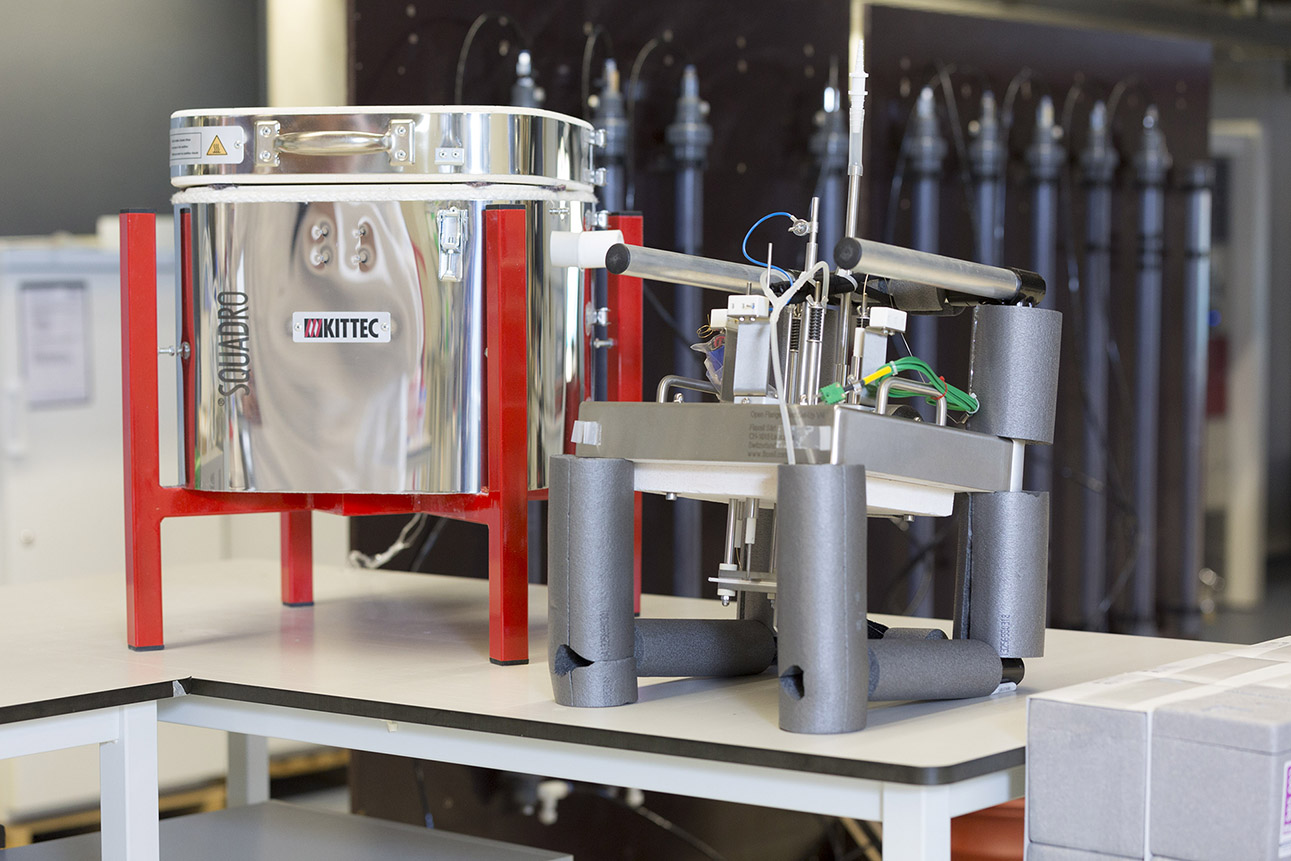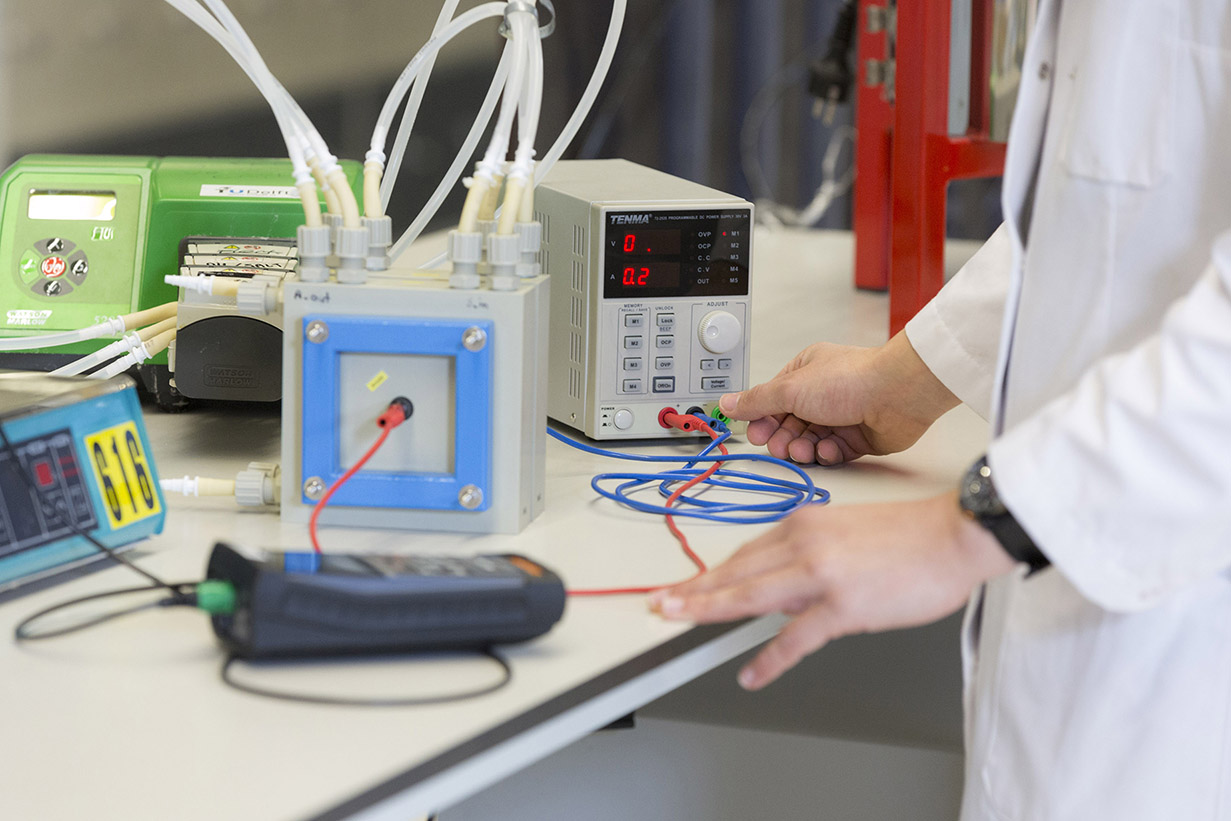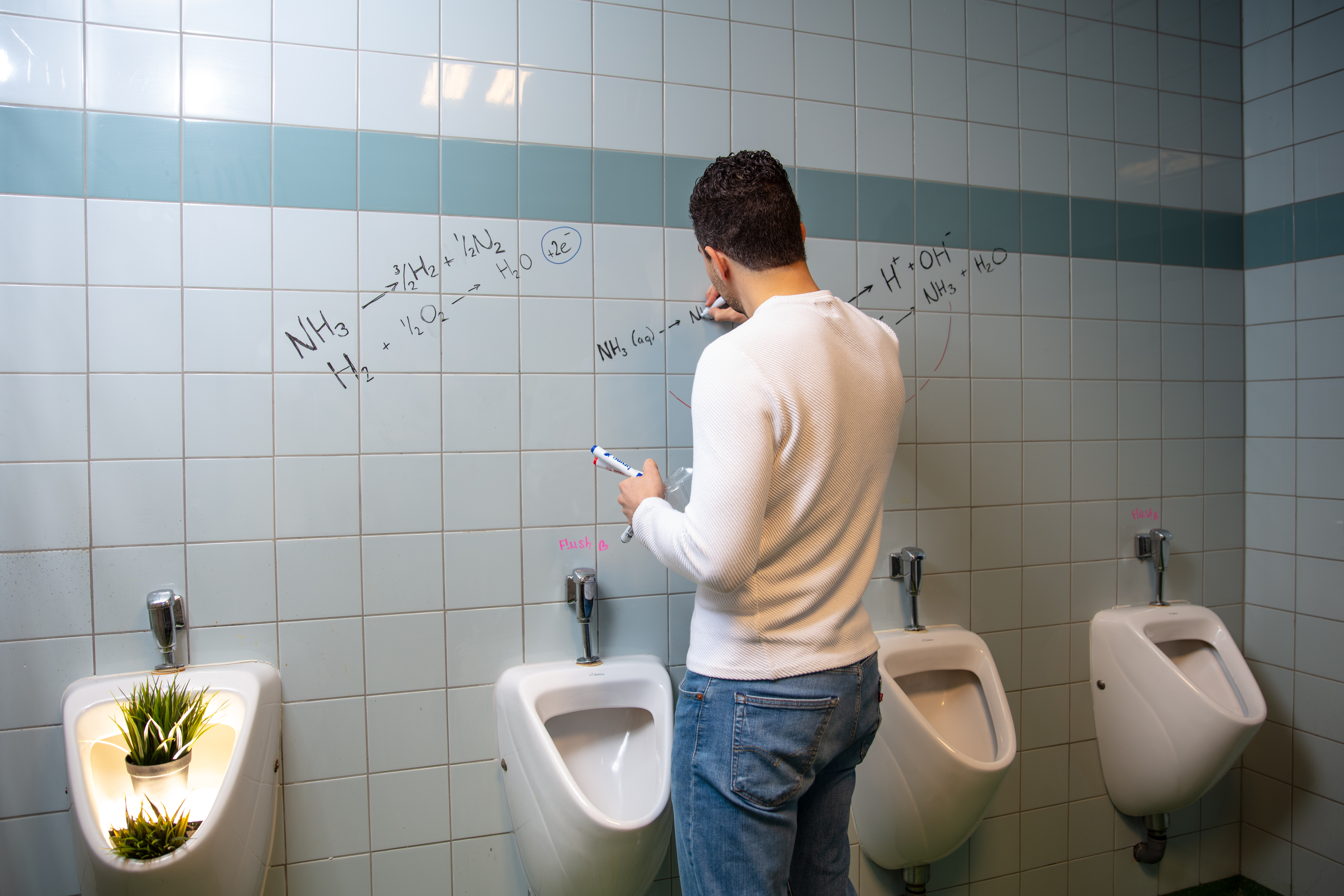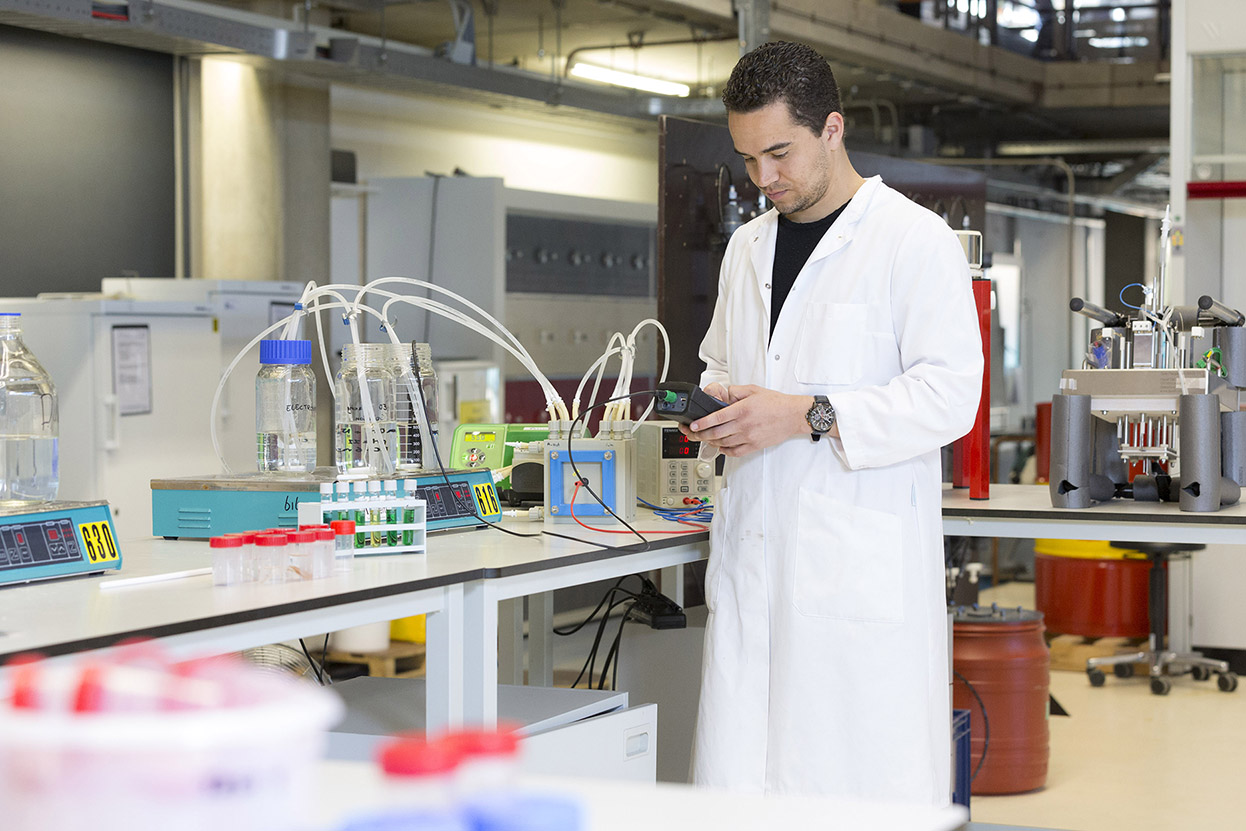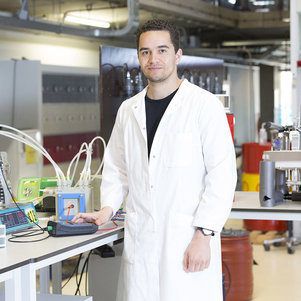While solar and wind power have become familiar sources of green electricity, we are not so well acquainted with the yellow variety: that won from urine. Or rather, from ammonium, a substance which occurs in the urine of people and animals and is habitually used in the production of fertiliser.
Circular electricity
The first thing Niels van Linden wants to make clear is that urine is not going to solve the world’s energy problems. ‘Urine will not be the number one energy source. You sometimes read about charging a phone using electricity from urine, but that is only a by-product of our concept. What it is really about is that we can extract ammonium from residual waters and turn it into electricity. That electricity can then be used for the treatment of the water, creating a circular system.’
Treatment
Ammonium ends up in water treatment plants via the sewers and industrial and agricultural residual waters. Van Linden: ‘The discharge of ammonium has a negative effect on the water quality of rivers and lakes because it promotes the excessive growth of algae. Currently, the treatment of residual waters containing ammonium is very energy-intensive.’
Ammonium enrichment
That is the reason Van Linden wanted to develop a system that not only uses little energy but generates it as well. How does that work? ‘We start with residual water containing around 1 gram per litre of ammonium. We use a technology called electrodialysis to remove the ammonium and simultaneously produce a solution which does not contain 1 gram of ammonium per litre but 10. We then increase the pH level of the water by only using electricity, making the solution alkaline. The ammonium is then turned into ammonia gas.’
Converting gas into electricity
The final step is to extract the ammonia gas from the solution, a process called ‘stripping’,’ Van Linden explains. ‘We use a vacuum pump to suck the ammonia gas out of the water. The ammonia gas then ends up in a solid oxide fuel cell, a combination of sorts between a battery and a combustion engine. The reaction between the ammonia gas and oxygen from the air in the fuel cell generates heat and electricity. The resulting gases (nitrogen and water) are harmless and can be simply released into the ambient air.’
Energy-neutral
At this stage of the project, the energy consumption is twice the energy production,’ Van Linden says. ‘Per kilogram of ammonia, we generate around 12 megajoules of energy. To remove 90 percent of ammonium from the water and convert it into ammonia gas we need 23 megajoules. So we need to increase the energy production and decrease the amount of energy we consume. We can do that by using better fuel cells and membranes with a lower resistance, which will make the process more efficient. The difference between energy input and output will eventually have to be reduced to zero. At that point, we can say to have developed a treatment method that is truly energy-neutral. And with a bit of luck, we’ll produce a bit more energy than we use.’
Win-win technology
Generating electricity from ammonium that is recovered from water is entirely new, Van Linden says. ‘The two most common methods to remove ammonium from residual waters use bacteria to convert ammonium into harmless nitrogen gas. But apart from nitrogen gas, these methods also produce harmful gases such as nitrous oxide, which is a very strong greenhouse gas. The use of specific bacteria also makes it difficult to control the process.’
Another way of ammonium removal is by stripping with air, a process which uses a lot of energy and a variety of chemicals, for instance, to increase the pH level . ‘We increase the pH level by using the electricity which we generate while converting the ammonia in the fuel cell. Our method has the double advantage of being less energy consuming and cleaner because no harmful gases are produced and no chemicals are involved.’
Applications
Van Linden says the new technology could be particularly helpful to treat concentrated residual waters. ‘If ammonium concentrations are high, it will take little energy to extract it from the water. The collection of human urine at a festival, for instance, could be a viable option, similar to having treatment plants at industrial or agricultural complexes. The decentralised collection of urine could also play a role in future housing developments. But we are not there yet. For the time being, we’ll be focusing our energy on optimising the technologies.’


